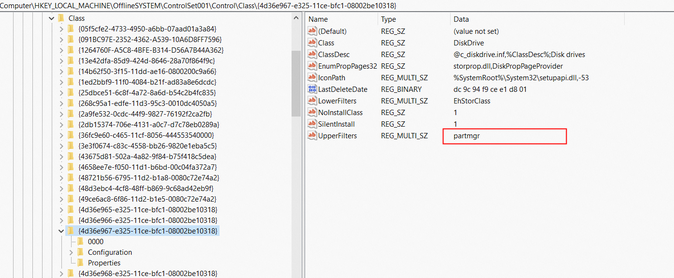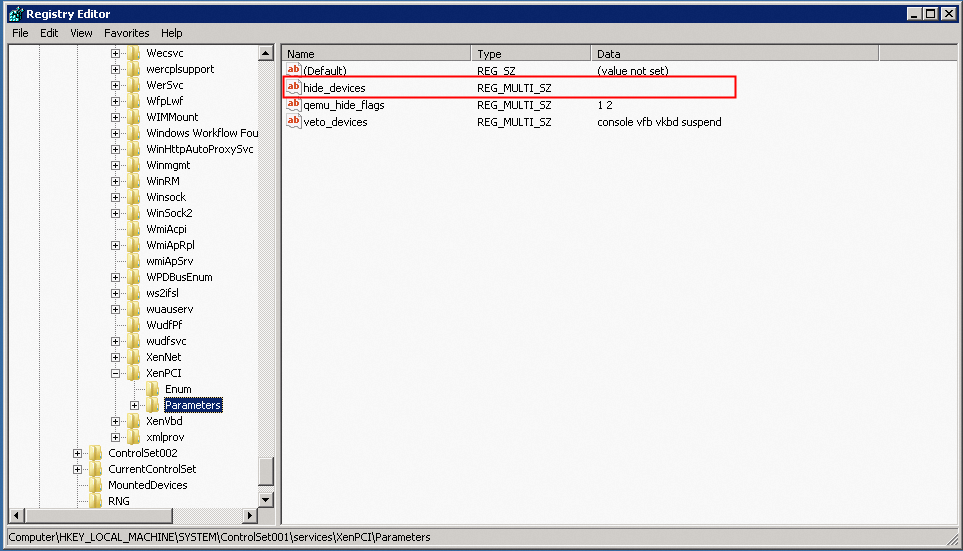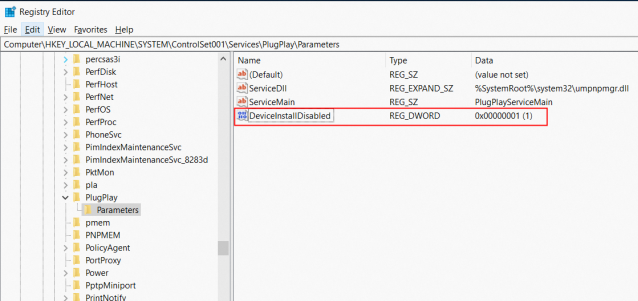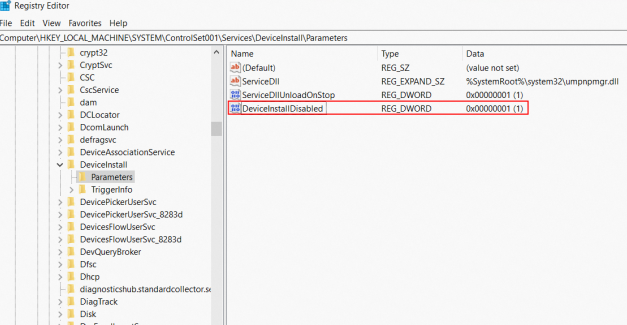This topic describes how to resolve the issues that are detected in a Windows image, such as residual drivers, residual Xen drivers, or configurations that prevent drivers from being installed.
Delete residual drivers from the registry
The HKEY_LOCAL_MACHINE\SYSTEM\CurrentControlSet\Control registry tree contains configurations that control system startup and specific aspects of devices that use the image. The Class subkey contains specific filter drivers that are registered on the devices. If the filter drivers are deleted but remain in the registry, the Elastic Compute Service (ECS) instances that use the image may fail to start. You must delete residual filter drivers from the registry. The following section describes how to delete residual drivers from the disk registry:
Log on to the source server on which you created an image.
Open Registry Editor.
In this example, Windows 10 is used. In the search box of the taskbar, enter regedit and press the Enter key to open Registry Editor.
Open the disk registry key.
The disk registry key is stored in HKEY_LOCAL_MACHINE\SYSTEM\ControlSet001\Control\Class\{4d36e967-e325-11ce-bfc1-08002be10318}.
Confirm and delete the residual drivers.
Check the value of the UpperFilter property to check whether the system has residual drivers.
If the drivers no longer exist in the image but remain in the UpperFilters property, the system has residual drivers. You can view the drivers in the image in the C:\Windows\System32\drivers directory.
WarningProceed with caution when you delete drivers. To prevent system exceptions caused by accidental driver deletions, make sure that the drivers are not built-in drivers.
For example, the partmgr driver shown in the following figure is a built-in driver. In this case, do not delete the partmgr driver from the UpperFilters property.

Delete the names of the residual drivers from the UpperFilters property.
Disable the Xen driver
The Xen driver is not used in virtual private clouds (VPCs) but may remain in specific earlier versions of images. As a result, the instances that use these images may fail to start. You can disable the Xen driver in the registry.
Log on to the source server on which you created an image.
Open Registry Editor.
In this example, Windows 10 is used. In the search box of the taskbar, enter regedit and press the Enter key to open Registry Editor.
Open the corresponding registry key.
The registry key is stored in HKEY_LOCAL_MACHINE\SYSTEM\ControlSet001\Services\XenPCI\Parameters.
Leave the hide_devices parameter empty.

Configure drivers to be installable
The HKEY_LOCAL_MACHINE\SYSTEM\CurrentControlSet\Services registry tree records all services in the system, including services that can control whether drivers can be installed. If a driver is not allowed to be installed in an image, the instances that use the image cannot update the driver. You must modify the registry parameters of the image to allow the driver to be installed.
Log on to the source server on which you created an image.
Open Registry Editor.
In this example, Windows 10 is used. In the search box of the taskbar, enter regedit and press the Enter key to open Registry Editor.
Open the corresponding registry key.
For operating systems later than Windows Server 2008 R2, the registry key is stored in HKEY_LOCAL_MACHINE\SYSTEM\ControlSet001\Services\DeviceInstall\Parameters.
For Windows Server 2008 R2 and earlier versions, the registry key is stored in HKEY_LOCAL_MACHINE\SYSTEM\ControlSet001\Services\PlugPlay\Parameters.
Modify the registry parameters of the image to allow drivers to be installed. If the DeviceInstallDisabled parameter exists and the value of the parameter is not 0, change the value to 0 or delete the parameter.
Example of Windows Server 2008 R2

Example of Windows Server 2016
